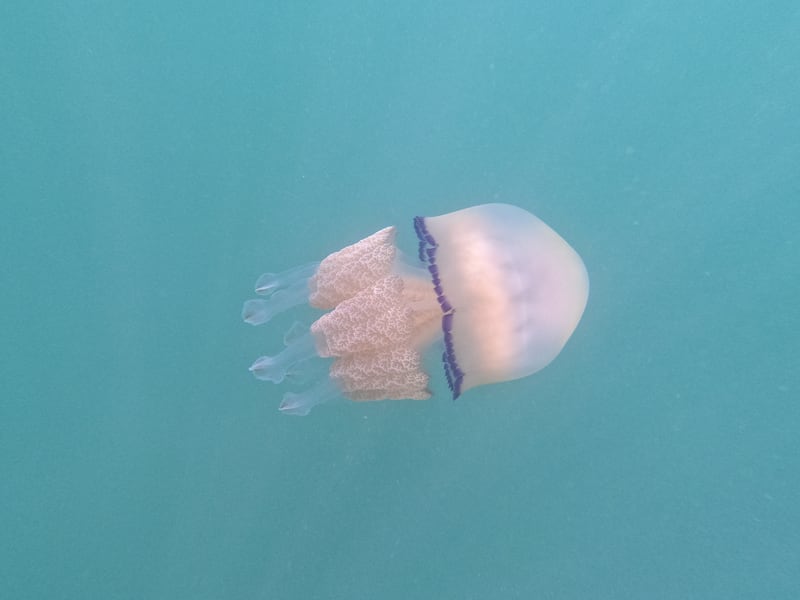Sea swimmers taking advantage of the warm weather to enjoy their first dip of the year this weekend may encounter some unexpected visitors in the water.
Barrel jellyfish – normally only seen in waters off the southeast Irish coast – have been washing up in unusually large numbers along the entire coastline as far as Cork in the past few months.
Sightings have been recorded by the National Biodiversity Data Centre (NBDC) from Lough Foyle on the north coast down to west Cork in the south with anecdotal reports of more.
[ Warm weather here to stay with temperatures of up to 22 degrees forecastOpens in new window ]
University College Cork scientist Dr Tom Doyle said the barrel jellyfish – so named because they can weigh up to 25 kilos – “look scary” but don’t really sting.
RM Block
Dr Doyle described the jellyfish as translucent in colour, resembling “cauliflowers” with eight oral arms or tentacles with thousands of little mouths to feed on plankton.

“The reports of their geographical spread began early in the year when we had 15 washed up in 30 days on our beaches,” he said.
Those initial reports came from Dublin, Meath, Louth and Waterford.
“Normally, we would only hear of them off Rosslare in Co Wexford where there can be several thousand barrel jellyfish,” said Dr Doyle. “Up to now, they have tended to be found in certain coastal pockets on these islands, like Carmarthen Bay in Wales.”
[ Alert over influx of Lion’s Mane jellyfish along north Dublin coastOpens in new window ]
A total of 96 confirmed barrel jellyfish have been formally filed to date with the NBDC, with sightings being recorded almost halfway around the entire coastline.
In addition, Dr Doyle has received reports through his Big Jellyfish Hunt social media page.
Open water swimmers in south Dublin Bay have noticed more of them, while there have been only occasional sightings off the west coast.
Paddy McNamara, a seasoned open water swimmer in Galway Bay, said barrel jellyfish were generally not very common in the bay. However, Mr McNamara said he had noticed a change in the past couple of years, where there were more frequent sightings of lion’s mane, one of the largest jellyfish with flowing tentacles and a more venomous sting.
He doesn’t believe the more frequent sightings relate to more open water swimming, which exploded during the pandemic.
“Lion’s mane jellyfish were rare enough here in Galway Bay up to two years ago, but now they are regarded as quite common on the west coast,” Mr McNamara said.
Galway Bay water temperatures were “normal” for this time of year, he said, at just over 14 degrees Celsius.
Dr Doyle hopes to “take the sting and fear” out of jellyfish generally at the Bloom Festival in Dublin’s Phoenix Park over the June bank holiday weekend. He has worked with botanical artist Shevaun Doherty and Blarney Castle head gardener and designer Adam Whitbourn on a “jellyfish garden”, which is funded by Science Foundation Ireland.
The design involves a “kreisel” aquarium with live moon jellyfish in circular flowing water – “kreisel” coming from the German word for “merry-go-round”.
“The aim of the garden is to ‘take jellyfish out of the sea’, and place them in a very different environment – a garden, where we can compare them with plants and flowers so that the viewer sees them in a different and positive light rather than just fear them,” Dr Doyle said.















